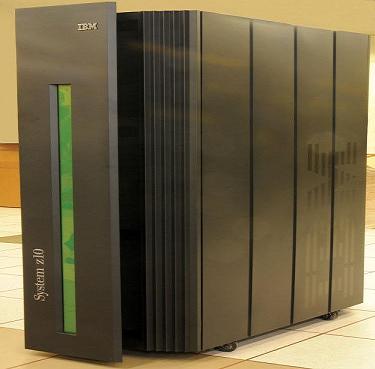| |
JES2
Job Entry Subsystem 2
 Please! Verify all details or
suggestions with the appropriate vendor and / or vendor's manuals. Please! Verify all details or
suggestions with the appropriate vendor and / or vendor's manuals.
MVS uses a job entry subsystem (JES) to receive jobs into the
operating system, schedule jobs for processing by MVS, and control job
output processing. JES2 (job
entry subsystem 2) is descended from HASP (Houston automatic spooling
priority), which is defined as a computer program that provides
supplementary job
management, data management, and task management functions such as:
scheduling, control of job flow, and spooling. HASP persists within
JES2 as the prefix string for
most module names and for all messages sent by JES2 to the operator.
- JES2 accepts the submission of work for the BCP and
exercises independent control over its job processing.
- SA32-0988-00 Network Job Entry (NJE)
Formats and Protocols PDF
- SA32-0987-00 z/OS JES Application
Programming PDF
- SA32-0990-00 z/OS JES2 Commands PDF
- GA32-0993-00 z/OS JES2 Diagnosis PDF
- SA32-0991-00 z/OS JES2 Initialization and
Tuning Guide PDF
- SA32-0992-00 z/OS JES2 Initialization and
Tuning Reference PDF
- SA32-0995-00 z/OS JES2 Installation Exits
PDF
- SA32-0994-00 z/OS JES2 Introduction PDF
- SA32-0996-00 z/OS JES2 Macros PDF
- SA32-0989-01 z/OS JES2 Messages PDF
Website
z/OS V1R12.0 Introduction and Release Guide
GA22-7502-18
Website
JES2 compared to JES3
z/OS concepts
IBM® provides two kinds of job entry subsystems: JES2 and JES3. In many
cases, JES2 and JES3 perform similar functions, but most installations
use JES2.
Both JES2 and JES3 read jobs into the system, convert them to internal
machine-readable form, select them for processing, process their
output, and purge them from the system.
Some principle differences between the two JES systems include:
In a mainframe installation that
has only one processor, JES3 provides tape setup, dependent job
control, and deadline scheduling for users of the system, while JES2 in
the same system would require its users to manage these activities
through other means. In an installation with a multiprocessor
configuration, there are noticeable differences between the two, mainly
in how JES2 exercises independent control over its job processing
functions. That is, within the configuration, each JES2 processor
controls its own job input, job scheduling, and job output processing.
In cases where multiple z/OS®
systems are clustered (a sysplex), it is possible to configure JES2 to
share spool and checkpoint data sets with other JES2 systems in the
same sysplex. This configuration is called Multi-Access Spool (MAS). In
contrast, JES3 exercises centralized control over its processing
functions through a single global JES3 processor. This global processor
provides all job selection, scheduling, and device allocation functions
for all of the other JES3 systems.
With JES3, installations may decide whether the global JES3 or z/OS
base control program will handle device allocation. With JES2, only the
z/OS base control program handles device allocation.
JES3 differs from JES2 in two main processing areas:
- JES3 exercises centralized control over its job processing
functions. JES2 exercises independent control. With JES3, a single,
global processor controls job, device, and workflow for all processors
in a multi-processor environment.
- JES3 does pre-execution of job setup. JES2 does not do this.
Website
Go to the JES3 page
|
|
Sponsored by
Software Diversified Services™


IBM z10
Home Page
CICS
COBOL
Dictionary
Hints / Tips
Internet
History
Mainframe Videos
Manuals
Programming
Programs
System z Academic Initiative
Sitemap
|





